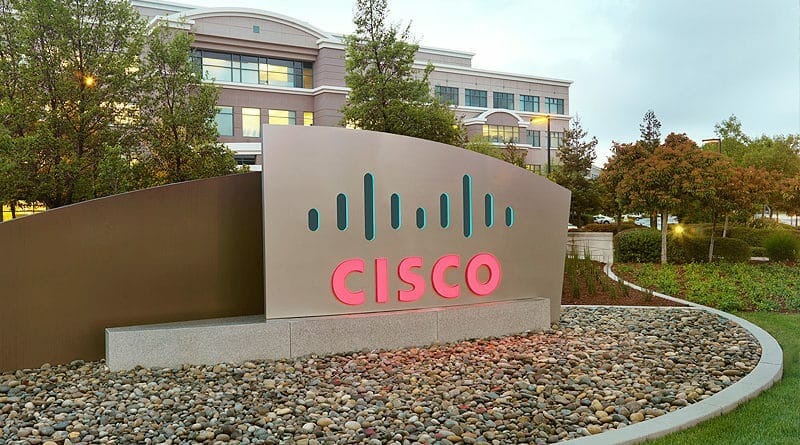The Internet is More Critical Than Ever. Now is the Time to Close the Digital Divide.
I’ve always believed that universal broadband internet access is a human right – just as important as food, shelter and water – that when fulfilled, enables individuals to help themselves succeed in the information economy. As the COVID-19 pandemic moves us deeper into a digital world, accessing education, establishing and maintaining a livelihood, and obtaining government and other critical services are being forced online.
The last thing we want to do during this health crisis and transformation is widen the digital divide and leave people behind when they are already struggling. Yet, we are at risk of doing just that as an estimated 3.7 billion people (approximately half the world’s population) remain unconnected today.
The consequences of this shortfall have never been more evident than during the COVID-19 crisis. Internet access has become increasingly vital to our health, safety, and economic and societal survival. As cities and countries across the globe ask their citizens to stay at home, billions of us are fortunate enough to be able to heavily rely on the internet to fill the gaps in our work and life.
Whether it is work, accessing healthcare services, or seeing our friends, so much of society has been impacted. Perhaps most starkly, school closures have impacted over 1.5 billion students in 188 countries, forcing many into distance learning. Yet, for millions of those students, their education has stopped because they aren’t connected to the internet.
About 14% of U.S. households with school-age children do not have internet access. Most of those are in households that make less than $50,000 a year, and many live in rural areas. Among those who do have access, not all have a quality broadband connection. Inevitably, these circumstances have left many families at an immense disadvantage in the absolute toughest of times.
In order to rectify this, there are three primary barriers we need to remove. A large portion of our global population lacks access to the internet, cannot afford the options available, or does not have the information and communication technology (ICT) skills to leverage it.
Accessibility: The first challenge is to expand broadband access to all. As the focus of Sustainable Development Goal (SDG) 9c, internet access is considered a basic necessity for human and economic development in both developed and developing countries. While financing for infrastructure has increased in developing countries and impressive progress has been made in mobile connectivity, digital divides still exist across all regions and countries. About 35% of the population in developing countries has internet access versus about 80% in advanced economies. Regardless of country, there is a disproportionate impact on rural communities and the poor. Residents of rural areas tend to be the ones who suffer the consequences of the divide – becoming digitally invisible in the information economy. This is because quality broadband infrastructure can be both expensive and technically challenging to establish. The good news is, as of 2019, almost all people around the world now live within range of a mobile network signal, with 90% living within range of a 3G-quality or higher network. This expansion of the mobile network, however, is growing more rapidly than the percentage of the population using the network, signifying there are additional barriers to overcome.
- Potential solution: Set up additional access points (with a focus on rural and poor communities) to increase WiFi and broadband internet access.
Affordability: Access means nothing if you cannot afford your bill. The United Nations target for affordable internet is 2% of monthly income for one gigabyte of data, an amount deemed to allow basic internet access. However, most individuals who make up the offline population live in poverty and therefore do not have the funds to pay a service provider, let alone buy a computer or device. In developed countries, like the U.S., public utilities such as electricity, gas, water and telephone services are often subsidized for those who can’t afford it. Broadband internet service should be treated similarly — as a public utility that everyone deserves as a basic human right. In Africa, for example, only the wealthiest 20% of South Africans can afford basic internet access. For the poorest 60% of South Africans, basic access costs between 6% and 21% of their monthly earnings. In Mozambique, one of the poorest nations in the world, the internet is unaffordable for almost everyone. Fortunately, there are extensive bodies of work already underway focused on removing this barrier, with some telecom companies and internet service providers extending service and offering free sign-ups. From here, we should continue to leverage the power of public-private partnerships to expand these offers and make them more permanent so that everyone – regardless of their income or postal code – is connected to high-speed internet for the long term.
- Potential solution: Offer broadband internet as an affordable, government provided public utility for those otherwise unable to afford it.
Digital Literacy: Around the world, internet use is tightly linked to education, and many people who are unconnected lack the ability to use digital devices, communication applications, and networks to access and manage information. “Not knowing how” to use the internet continues to be a significant barrier to digital inclusion. Approximately 23% of adults internationally are not digitally literate (with women four times less likely than men to be digitally literate) which means that even if internet is affordable, many won’t be able to benefit from it. Today, nearly every job or means to a livelihood requires digital communication at some point, so equipping people with the skills to effectively and responsibly find, evaluate, communicate, and share online content is key to their futures. Understanding computer fundamentals, online safety, technology applications, and computational thinking and coding, among others, are essential skills that should be introduced as early as possible and reinforced at the appropriate cognitive stages and grade levels. We need to continue to invest in digital adoption and literacy globally, ensuring that when affordable service is provided, both males and females are inspired and empowered to use technology to help themselves thrive in the information economy.
- Potential solution: Embed digital literacy skills in everyday curriculum and instruction across all education levels, beginning in primary school.
I believe, in the wake of COVID-19, we have “crossed the Rubicon” – there is no turning back. An internet that only serves a portion of the world’s population during a crisis only reinforces the disadvantages of the digital divide and constrains our ability to create a more sustainable, inclusive future for everyone. We must remove these barriers now or face a world where students are unable to acquire the skills needed to join the workforce; individuals are unable to obtain or maintain jobs; seniors or those with disabilities are unable to get remote healthcare support; and small businesses are unable to expand their services to meet the changes in customer needs.
It’s not enough to say that broadband is a human right; we must push for policies that ensure all stakeholders treat it as one. Many governments, companies, and nonprofits are already taking valuable steps to help bridge the digital divide. However, we must continue to push all stakeholders to move beyond ‘business as usual’ and work across sectors and geographies on collaborative, long-term approaches that connect everyone for the long term. We have a moral and economic obligation to do so, so that no one is left behind…especially in the most challenging of times.
SOURCE: TAE YOO – CISCO
https://blogs.cisco.com/news/the-internet-is-more-critical-than-ever-now-is-the-time-to-close-the-digital-divide

Senior Vice President
Corporate Affairs
Tae leads Cisco’s social investments and stewards CSR and sustainability across the business. She directs Cisco’s business, technical, and financial assets to accelerate global problem solving to positively impact people, society, and the planet.
Under Tae’s leadership, Corporate Affairs strives to inspire, connect, and invest in global problem solvers to nurture innovative solutions and catalyze an entrepreneurial ecosystem that supports progress and inclusive growth. Corporate Affairs also invests in developing digital skills so everyone can participate in the digital economy and become a global problem solver. Corporate Affairs has committed to positively impact 1 billon people by 2025.
One of Cisco’s early employees, Tae pioneered Business Development – establishing new markets through partnerships for joint product and market development. Under her leadership, the Cisco Networking Academy program has become one of the largest ICT education programs worldwide, helping 1.6 million get jobs since 2005. She is a Trustee of the Cisco Foundation, a member of the Service Year Alliance Board and of the World Economic Forum Global Future Council on Entrepreneurship.
https://blogs.cisco.com/news/the-internet-is-more-critical-than-ever-now-is-the-time-to-close-the-digital-divide

